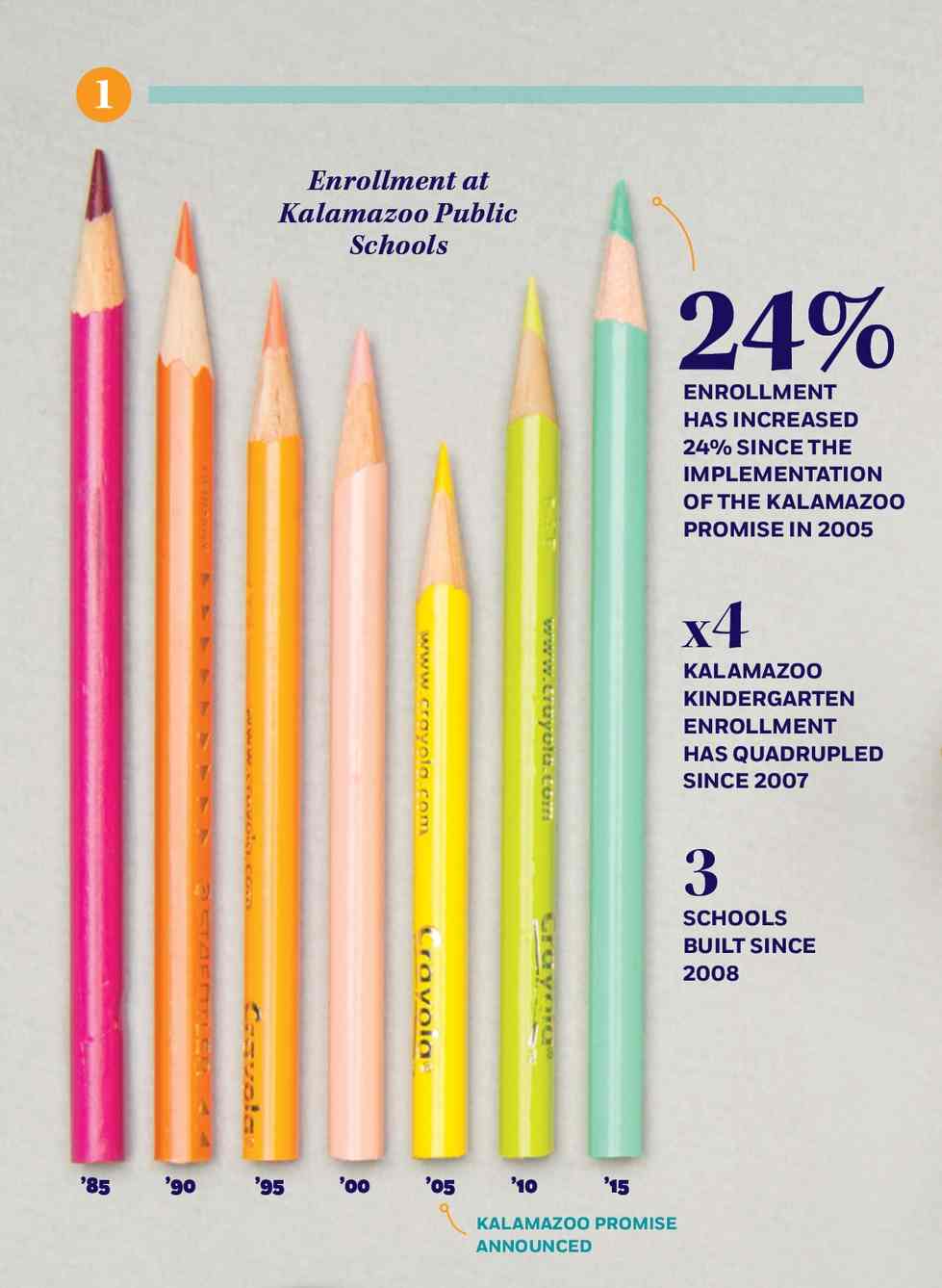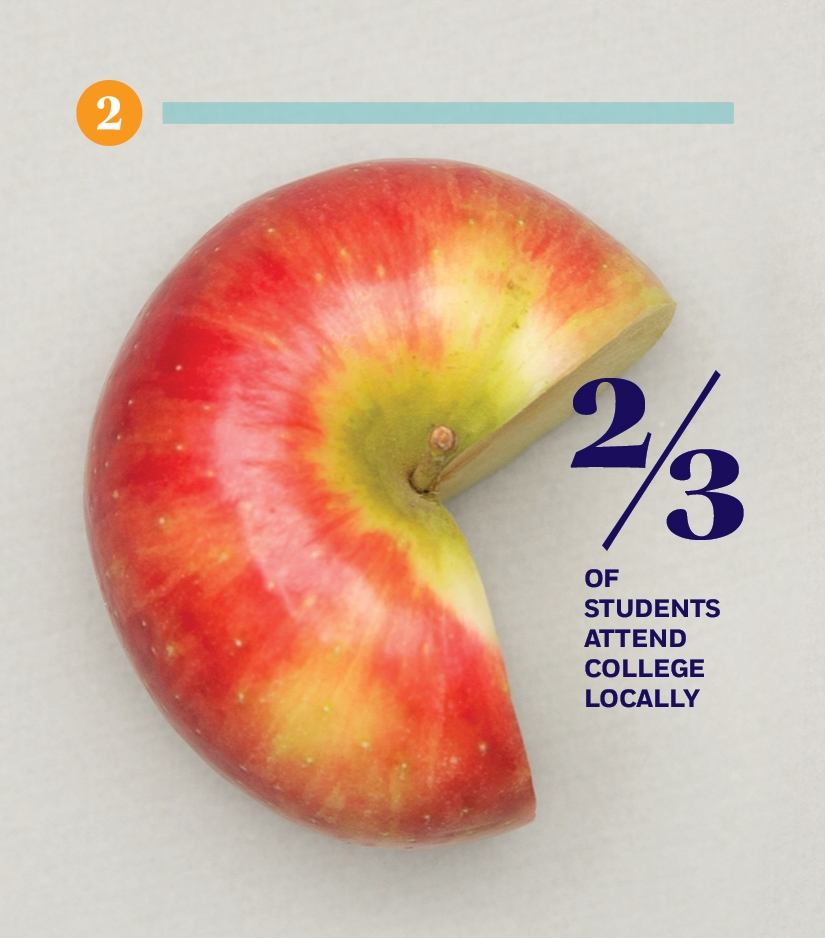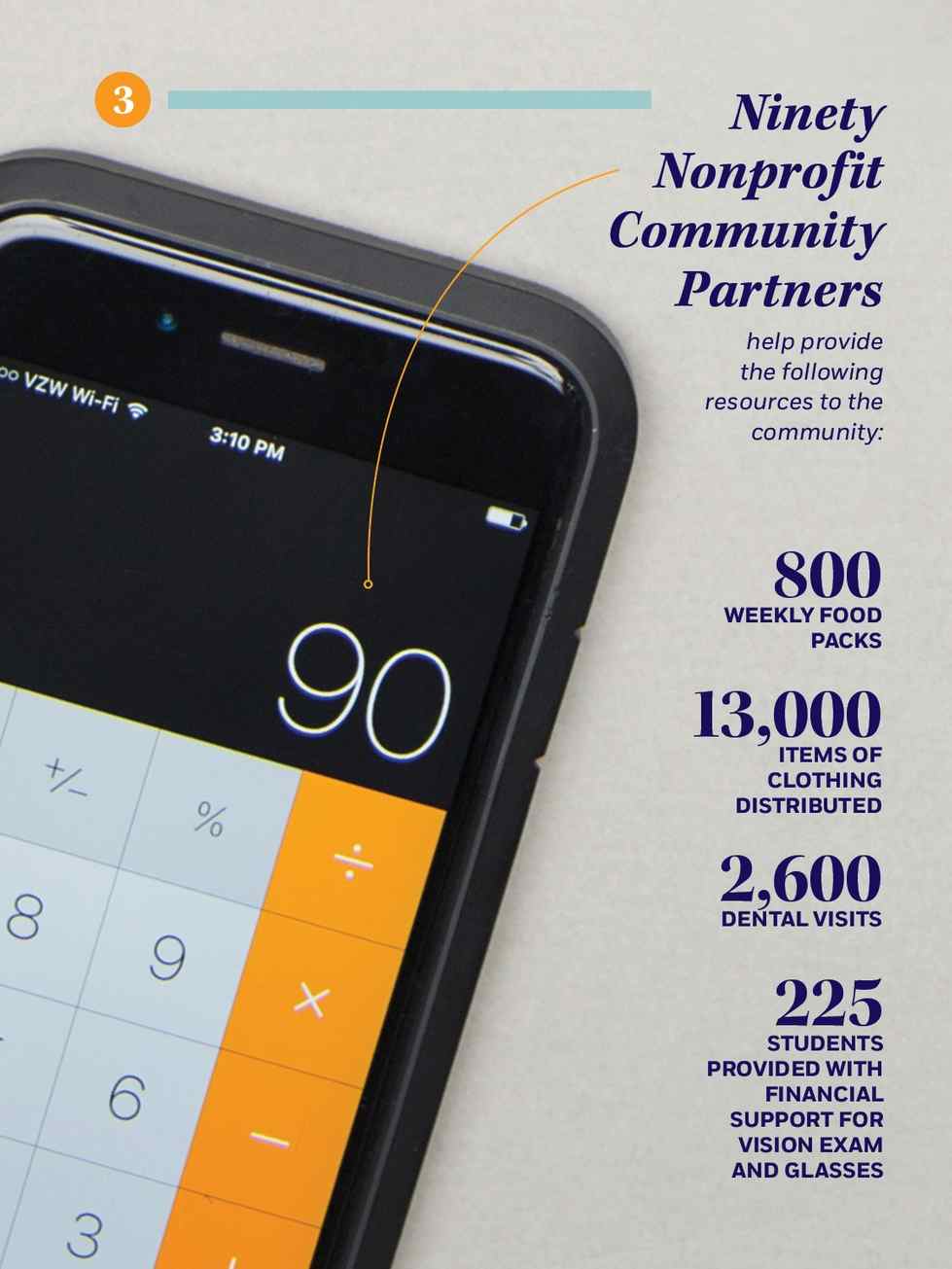Research Winter 2017
'Promise' provides access and innovation
by Nate Hoekstra
photos by Jess Weal
The Kalamazoo Promise program came on the scene as a revolutionary concept in 2005: a program that would pay tuition at a college or university for students who met certain requirements and graduated from a Kalamazoo Public Schools high school. More than 200 students have enrolled at Grand Valley with Kalamazoo Promise scholarships.
Eleven years later, the program is still unique in its generosity, which makes it an ideal case study of the “promise zone model,” according to Michelle Miller-Adams, associate professor of political science.
Miller-Adams is currently studying the impacts of dozens of “place-based” scholarship programs, researching the school districts where programs are available, and their surrounding communities.
Enrollment at Kalamazoo Public Schools

“So many of these are under-studied, including the Kalamazoo Promise,” Miller-Adams said. “But because of these programs, Michigan is really becoming an unrecognized leader in the area of college access.
“What we’re seeing with these programs is that we have been very innovative in a resource-poor environment to promote college affordability and community change.”
Miller-Adams said her research consistently shows that place-based scholarship programs have an impact far beyond the educational attainment of students.
Place-based scholarships, especially more valuable ones from an economic standpoint, serve to stabilize school districts, promote investment in communities and help create an environment that encourages collaboration from area nonprofit organizations, Miller-Adams said.
She also said the economic impact of the scholarship program is important, confirming that better-paying jobs require more baseline education than they once did.
“High school used to not be free and compulsory in the United States. It became required because employers saw a need for better-educated employees.
"Now, it’s quite clear that employer needs are not being met by people with high school diplomas, that some kind of post-secondary training, credential, or degree is needed,” Miller-Adams said.
She said her research indicates that low-skill and low-education jobs are quickly becoming obsolete because of technological advances. The jobs that used to exist for high school graduates and provide a living wage, like auto manufacturing jobs, now require significant amounts of technical expertise and specialized training.
Another benefit is an inherently stabilizing effect the programs have on the communities where they exist. Miller-Adams said that Kalamazoo Public Schools is a great example, where a trend of declining enrollment was not only stopped but reversed by the Kalamazoo Promise. Enrollment in KPS has increased by 24 percent since 2006.
“The program provides a stabilizing factor to the community,” she said. “It means at the center of the Kalamazoo region, you now have an improving, growing school district. It’s gluing people to the core of the community rather than spreading out to the suburbs. Every other urban school district in the state has declined in enrollment. The figures show that Kalamazoo is the one district of that type that’s grown.”
Promise programs tend to promote what Miller-Adams called “cross-sector alignment,” or the tendency of local nonprofit organizations to naturally align their missions with the existence of a promise program.

“For these different programs to succeed, community support is really critical,” Miller-Adams said. “The idea of a college education is ridiculous if you’re in a situation where you don't have food to eat on weekends or shoes to wear.
“There are all of these basic needs that have to be met to ensure there is not a lot of unrealized potential from students who could have free tuition but don’t qualify academically. Leaving that money on the table is a high opportunity cost if there’s not community support.”

The Kalamazoo Promise has seen significant successes, including 85 percent of eligible students starting college within one year of graduation, and more than 4,000 scholarships awarded. Miller-Adams said there are still important questions to be asked, such as why some students do not complete a certification or degree program, and how the program impacts racial and socioeconomic diversity over time.
She also acknowledged that of the dozens of place-based scholarship programs she’s studying around the nation, many face different challenges than the Kalamazoo Promise. Some are underfunded, others limit scholarship use to a few higher education options, while others face challenges from covering a larger geographic area than a single district.
“Communities around the country are trying to do these programs in various ways, but it’s not always very easy,” Miller-Adams said. “Kalamazoo is unique in its generosity and in the fact that it’s funded by a group of very wealthy anonymous donors.”
She also added that funding and political realities suggest that while it’s not realistic for similar programs to occur everywhere, she is hoping her research and insights can help provide best practices for communities that already have programs in place and for those considering setting up new ones.
